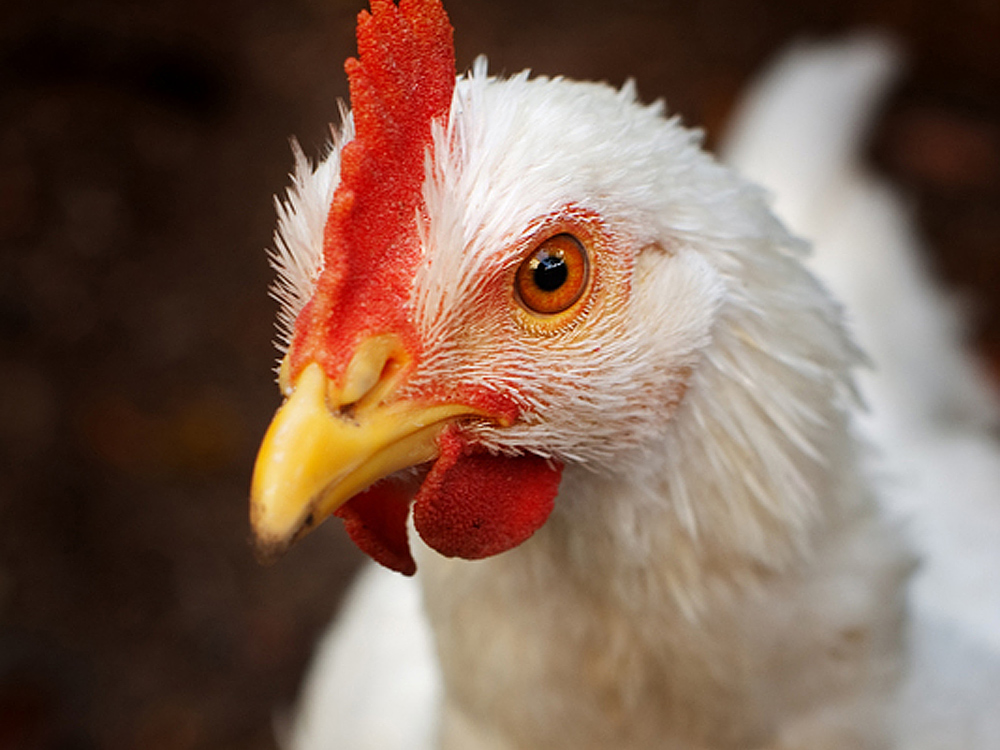Farm Biosecurity Project

Aim: To assess whether it is possible to consistently exclude or reduce the level of colonisation of campylobacter during the commercial production of poultry reared in standard and enhanced environments.
Project outline
To implement agreed biosecurity controls on selected poultry farms and assess their effectiveness at excluding campylobacter from the flocks or reducing the number of bacteria on carcases.
Measurement of the level of contamination was by enumeration of campylobacter in the caeca and on the neck skins.
The project analysed the results of on farm interventions from 16 farms (9 model farms) looking to provide a robust basis on which to base decisions to roll out the effective interventions to all sites. The farms were selected to represent the range of shed types and ages found in UK farms. Standard and enhanced welfare farms were selected. Each retailer in the project each had at least 1 model farm supplying their product. All major production areas in the UK are represented. The information was generated from both small and large units and contract and company farms.
The results from the model farms were compared to farms populated at the same time and with the same welfare status. Outcomes were measured by comparing the campylobacter enumeration results in the caeca with the results from the random weekly routine test results. The project ran for 2 years from 1st September 2011 collecting data from 16 crops.
Farm types
Of the 16 farms chosen:
- 10 were enhanced welfare and 6 were standard welfare
- 3 in Northern Ireland, 4 in East Anglia, 2 in the Midlands, 3 in the South West, 3 in Scotland, 1 in Wales
- There was an average of 5 sheds per arm (min. 1, max. 10)
Interventions used
- Standard biosecurity for control farms: Red Tractor assurance scheme for poultry farms
- Additional biosecurity for model farms: Each shed was a biosecure unit with all protective clothing and equipment being shed specific
- Thinning: Additional clothing changes and biosecurity practices during thinning, including module, crate, and transport initiatives
- Depopulation: Clearing sheds within five days of thin to reduce campylobacter load if introduced during thinning
- Shed rest period: Extending the time between flocks while not compromising commercial operations
Each farm was visited and the biosecurity assessed. Regular visits were mad by area managers and the results were provided to the farmers.
Sampling regime
The following tests were carried out to measure the level of campylobacter and assess the success of biosecurity interventions. All testing was done to the ISO standard for enumeration (10272:2) at certified laboratories. Testing of caeca involved 5 samples pooled into 1, and neck skin testing 3 samples pooled into 1.
- Caeca from birds of every model shed at thin (approx. 357 tests per year)
- Caeca from birds of every model shed at depopulation unless campylobacter status is known to be positive (approx. 315 tests per year)
- Neck skins from every model farm (approx. 91 tests per year)
Results
- The data was collected by Industry on 883 crops from 16 farms over 2 years.
- Three quarters of crops have >1000 cfu/g colonisation, while a quarter of flocks have <100 cfu/g colonisation (caeca samples at thin and depopulation)
- There was marked seasonality
- 50% of those found negative at thinning were positive at depopulation (further analysis is being carried out on this)
- There was a very slight significant association between a period of more than 5 days between thinning and depopulation and the crop being positive. However, the data set was quite large which could have the effect of picking up associations which may not have much effect biologically
- The proportion of high risk crops (days between thinning and depopulation >5 days) if reduced to under 5 days will decrease the numbers of positives, but only by 12%. From these results stopping thinning would decrease the Campylobacter colonisation rate-but only by 12%.
- An increase in the number of days that sheds are left empty are strongly linked to a decrease in the caecal campylobacter count at thinning (more than that seen at depopulation)
- There was a trend in lower values of caecal campylobacter count at thin with increasing days of sheds left empty (needs to be confirmed that this is not an outlier (e.g. shed rest days > 20 days) were excluded)
Conclusion
The bio-security standards used on the model farms was unable to totally protect the chicken from colonisation with campylobacter. The project demonstrated that not all sheds on a farm became positive with campylobacter when good bio-security was applied between sheds. In farms using the higher bio-security standards fewer sheds became positive.
Thinning is the term used when some birds are removed from a shed, usually 25-30% and the remained left to grow on. High level bio-security is broken during thinning. Stopping thinning and completely depopulating sheds may result in a reduction of around 12% reduction in campylobacter positive sheds. The results were obtained from a small number of farms and further work is being undertaken to evaluate the effects of stopping thinning.
Further detailed analysis is being undertaken by an independent organisation.

